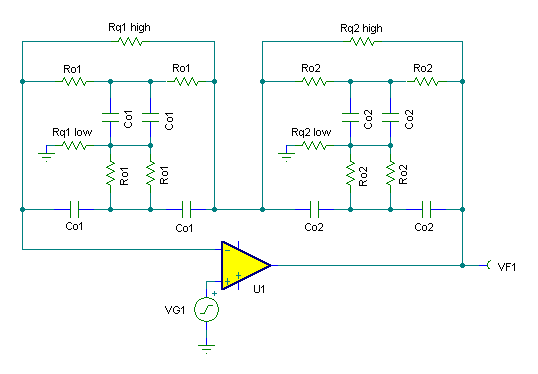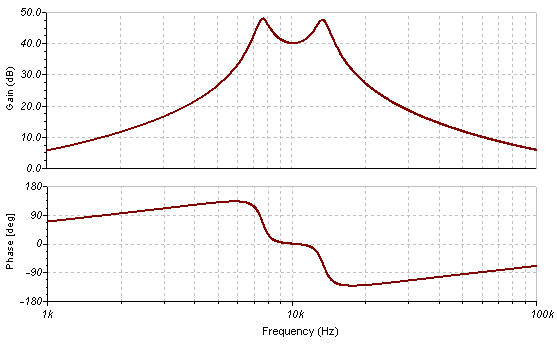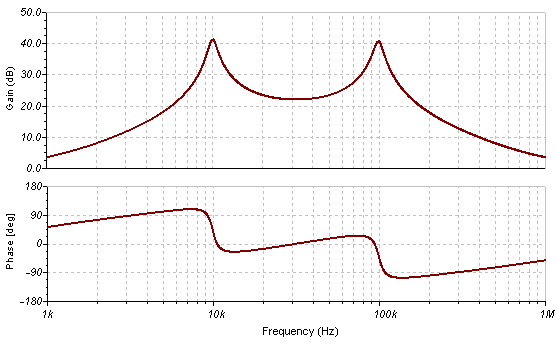
There is a curious variation of the Twin T topology. It is possible to put two or more networks inside the feedback loop:

When this is done, two or more peaks are produced. There are a couple of potential uses for this technique:
The purpose of stagger tuning is to produce a bandpass filter which has minimal phase shift at its center frequency. This can be done by designing bandpass filters separated in frequency by equally spaced peaks on either side of the desired center frequency:

In practice they should be spaced logarithmically, not linearly, but linear "equal and opposite" provides a good enough approximation. If an even flatter phase response is desired, the peaks can be separated more - but the amplitude of the center frequency will be reduced and the bandwith increased.
There is nothing to stop a designer from using a different filter topology such as my modified Deliyannis, but stagger tuning would require two opamps, where this topology is a single op amp topology. Design procedure for a stagger-tuned filter is to pick frequencies +/-20% or so from the center frequency, and design Twin-T band pass filter sections for them. The response can be easily "tweaked" by going up (on the upper frequency section) and down (on the lower frequency section) one standard value on the resonant capacitors. I have included the Twin T calculator below for your convenience.
If the process above is continued, making the peaks further and further apart, eventually the gain between the two peaks approaches zero, and you have a two peak bandpass filter:

Notice that this could still be considered a "stagger-tuned" 31.6 kHz band pass filter, but its gain would be really low and the bandwidth much larger. The phase response is also not so flat any more - the peaks are far enough separated that the phase plot actually resumes a positive slope almost as if neither peak were present. This filter could be more accurately described as a double peak bandpass filter, with peaks at 10 kHz and 100 kHz. Incidentally, if the peaks are separated by exactly one decade, the resistors can be the same for each peak and Co varied by a decade in each section.